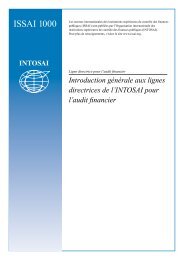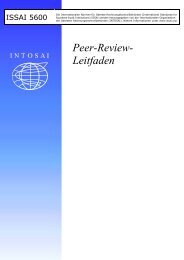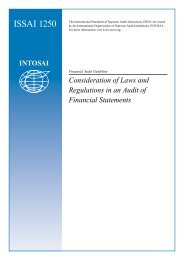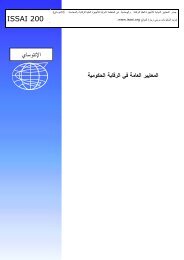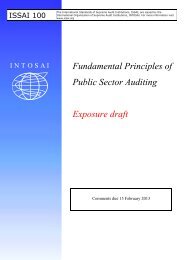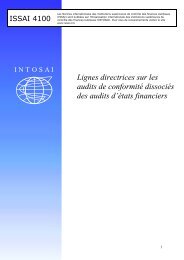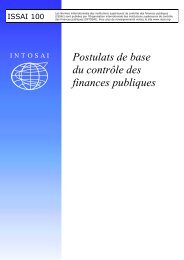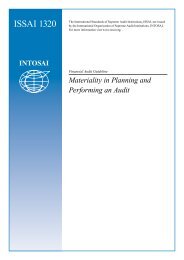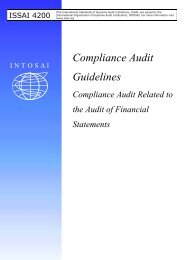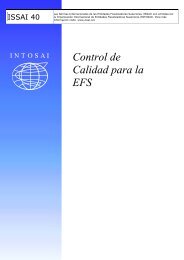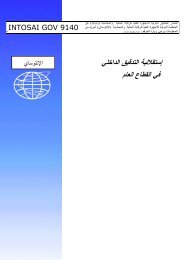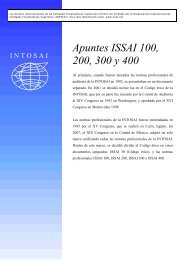ISSAI 1240
ISSAI 1240
ISSAI 1240
You also want an ePaper? Increase the reach of your titles
YUMPU automatically turns print PDFs into web optimized ePapers that Google loves.
<strong>ISSAI</strong> <strong>1240</strong><br />
ISA 240<br />
THE AUDITOR’S RESPONSIBILITIES RELATING TO<br />
FRAUD IN AN AUDIT OF FINANCIAL STATEMENTS<br />
• Transactions that involve non-consolidated related parties, including<br />
special purpose entities, have not been properly reviewed or approved by<br />
those charged with governance of the entity.<br />
• The transactions involve previously unidentified related parties or parties<br />
that do not have the substance or the financial strength to support the<br />
transaction without assistance from the entity under audit.<br />
Evaluation of Audit Evidence (Ref: Para. 34-37)<br />
A49. ISA 330 requires the auditor, based on the audit procedures performed and the<br />
audit evidence obtained, to evaluate whether the assessments of the risks of<br />
material misstatement at the assertion level remain appropriate. 19 This<br />
evaluation is primarily a qualitative matter based on the auditor’s judgment.<br />
Such an evaluation may provide further insight about the risks of material<br />
misstatement due to fraud and whether there is a need to perform additional or<br />
different audit procedures. Appendix 3 contains examples of circumstances<br />
that may indicate the possibility of fraud.<br />
Analytical Procedures Performed Near the End of the Audit in Forming an Overall<br />
Conclusion (Ref: Para. 34)<br />
A50. Determining which particular trends and relationships may indicate a risk of<br />
material misstatement due to fraud requires professional judgment. Unusual<br />
relationships involving year-end revenue and income are particularly relevant.<br />
These might include, for example: uncharacteristically large amounts of income<br />
being reported in the last few weeks of the reporting period or unusual<br />
transactions; or income that is inconsistent with trends in cash flow from<br />
operations.<br />
Consideration of Identified Misstatements (Ref: Para. 35-37)<br />
A51. Since fraud involves incentive or pressure to commit fraud, a perceived<br />
opportunity to do so or some rationalization of the act, an instance of fraud is<br />
unlikely to be an isolated occurrence. Accordingly, misstatements, such as<br />
numerous misstatements at a specific location even though the cumulative effect<br />
is not material, may be indicative of a risk of material misstatement due to fraud.<br />
A52. The implications of identified fraud depend on the circumstances. For<br />
example, an otherwise insignificant fraud may be significant if it involves<br />
senior management. In such circumstances, the reliability of evidence<br />
previously obtained may be called into question, since there may be doubts<br />
about the completeness and truthfulness of representations made and about the<br />
genuineness of accounting records and documentation. There may also be a<br />
possibility of collusion involving employees, management or third parties.<br />
19<br />
ISA 330, paragraph 25.<br />
29<br />
264 The Auditor’s Responsibilities Relating to Fraud in an Audit of Financial Statements



